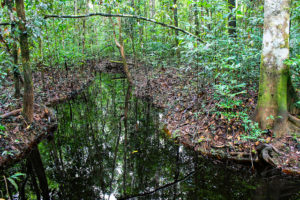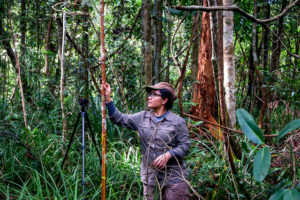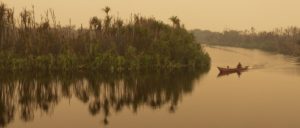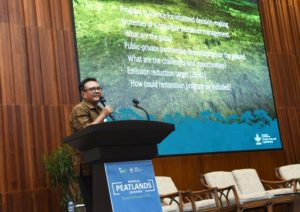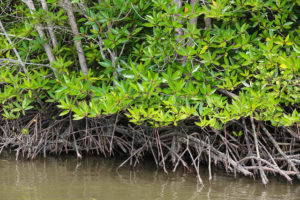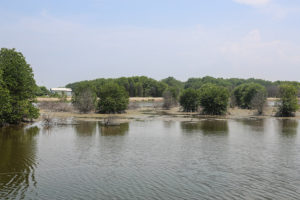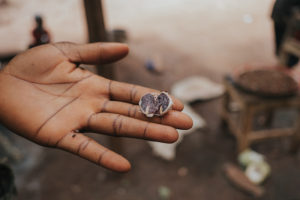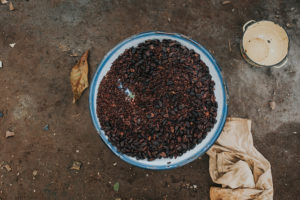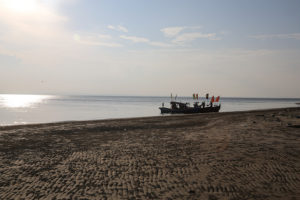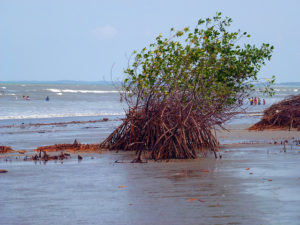Peatlands are increasingly playing a bigger role in forest conservation thanks to their extraordinary proficiency at carbon sequestration.
In November the Center for International Forestry Research’s (CIFOR) Forests News reported that the ‘bogs’ had finally been given the spotlight. The newly established International Tropical Peatlands Center (ITPC) is set to open its doors in 2019, to bring ‘researchers, governments, civil society and other stakeholders together to ensure the conservation and sustainable management of peatlands throughout Southeast Asia, the Congo Basin and Peru’.
Here, three scientists from CIFOR – a coordinating partner of the ITPC and longtime peatlands analysist – explain ‘why peatlands, and why now.’
Answers have been written in sic, though minor amendments have been made for easy reading.
Why are peatlands important for biofuel and bioenergy?
Himlal Baral: Peatlands provide a wide range of ecosystem goods and services- for example, climate regulation and water cycling. And they are a great source of biodiversity, as well as ecosystem goods- such as timber and nontimber products, including bioenergy. The biomass produced peatlands can be converted into sustainable energy production. That’s why it’s getting attention as bioenergy.
What are you working on right now?
HB: We are doing quite a few and different projects- but one of the projects is about bioenergy production potential in a variety of landscapes, including peatlands. We are looking at how peatlands can be utilized for sustainable biomass production without damaging their nature and characteristics. The technique is called paludiculture. It involves growing trees or growing things on wetlands conditions, it is an excellent example to utilize peatlands. We are currently developing, testing a wide variety of tree species that can produce bioenergy from peatlands.
Why is the study of peatlands important?
HB: Peatlands are extremely important to ecosystems. They are home to endangered species, rare species, such as orangutans. They are great sequesters of carbon and they provide livelihood opportunities for millions of people living on and around peatlands. So, they are not only for people, but also for nature.
Can you tell us what you’re working on right now?
Dede Rohadi: In leading this project I work with local partners, and our main focus is to understand how the community is using and managing the peatlands. We are trying to identify what other options there are in developing livelihoods other than oil palm, because the problem is it seems that everybody goes into the oil palm business, and we understand there are a lot of negative impacts to the environment because of this expansion. So, we’re trying to develop what are the other options that are more in line with peatland conservation strategies.
What is the relationship between humans and peatlands?
DR: I think it is interesting to understand the behavior of people, especially the farmers who are living around the area. For example, we can understand why the people are interested in expanding the oil palm plantations. Previously they used the peatland for growing paddy, silviculture, lots of fruits on their lands- but it seems because of the market, they turn to oil palm plantations.
Also, some people are selling their lands to other people for oil palm expansion. There is a lot of industry there and the market is good, so people are dragged in because they feel comfortable with oil palm as they have secure income from it. But actually, there are a lot of other commodities that may be prospective for them to develop. But, there are some questions. For example, we need to provide the market channel and also we need to provide them with the knowledge and the skills on how to use or develop these alternative products. That’s what my project is doing.
What are some alternatives?
DR: For example, we can develop on farm-based and off-farm-based options. On farm-based, for example, some commodities such as pineapple. Pineapples grow well in the peatlands and the peatlands don’t need to be drained. In fact some of the people also now plant them, and they have a good market. But, the question is if more people grow this pineapple what will be the market? If the market is saturated then that is an important question for us to develop. And coconut, for example. In one village coconut has been planted by people and up until now they’re still planting coconuts and it has been the main source of their livelihoods. And betel nuts too.
We can also develop off-farm activities such as honeybees, because the people in the area are still collecting wild honey. It’s a good product, and the market is there, but they need to improve the market channel. They need to improve, for example, the quality of the honey and how to also not only collect the honey but also cultivate the honey in the home garden. Because there are different honeys- we can provide them with the knowledge.
Another product is fish, for example. A lot of people are living around the river, which has a high potential for fish industry. Up until now it has not been used optimally- so we can provide the technology for example, on how to process fish into fish products, and add value to their products.
Why did you get into forestry?
Herry Purnomo: I got into forestry first, because I love nature and lots of things related to nature I would like to contribute to. Secondly, forests and forestry matter to our lives, to the sustainability of this planet. Forests can contribute to the economy of this country [Indonesia]. For example, timber production, as well as ecosystem services such as ecotourism, as well as providing lots of benefits to people and local communities.
Can you tell us about your peatlands work?
HP: Now I’m working on a community-based fire prevention and peatland restoration in Riau province in Indonesia. We call this ‘participatory action research’. We try to work with the local community to understand the behavior of peatlands, to reduce the fire evidence, as well as to restore the degraded land.
So the community is not only the object of our work, but also the subject of restoring peatlands. It’s a 15-month project and very interesting actually to understand the peatlands, as well as transforming the local livelihood into more peatland-friendly. We use the theory of change for the current situation – in which people are likely to use fire fir agriculture and peatland, to reduce the fire as well as improve the livelihood of the people there. We’re funded by Temasak and the Singapore Cooperation Enterprise from Singapore.
Why is the study of peatlands important?
HP: Firstly, the fire in 2015- let’s call it a disaster because it produced a lot of toxic haze and people in Indonesia, Malaysia and Singapore in particular suffered from the burning of the peatlands and forests.
So now we try to do research and science enquiry to provide more sustainable livelihoods by not only investigating, but by providing evidence and an action arena that communities as well as government can do – peatland management without fire. It’s not easy because using fire is common for local communities, but we provide evidence that a community can get benefits by not using fire, but more sustainable agriculture. We believe that good peatland management will happen in Riau in this way.
By Christi Hang, originally published at CIFOR’s Forests News.
This research forms part of the CGIAR Research Program on Forests, Trees and Agroforestry (FTA), which is supported by the CGIAR Trust Fund.
This research was supported by Temasak and the Singapore Cooperation Enterprise.












